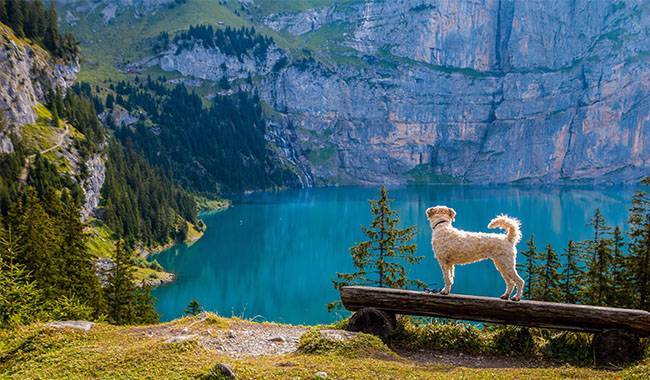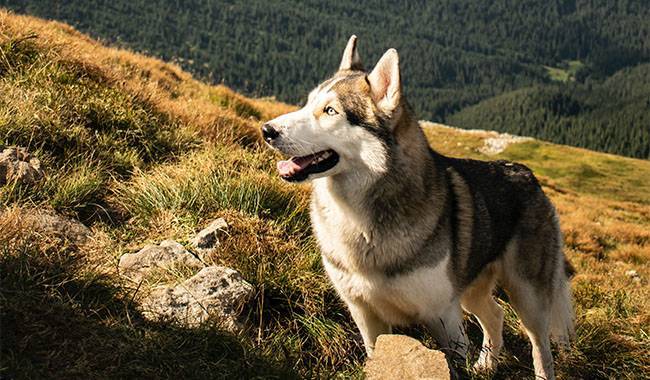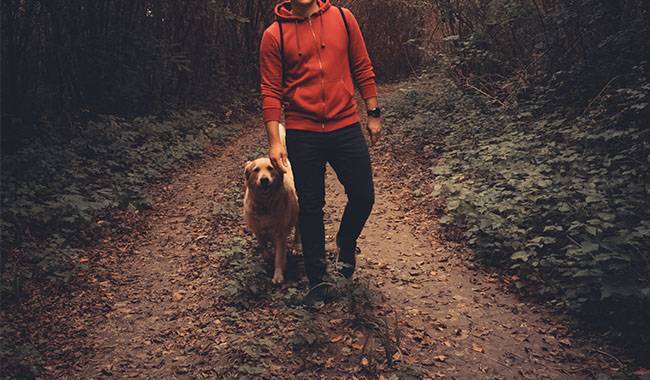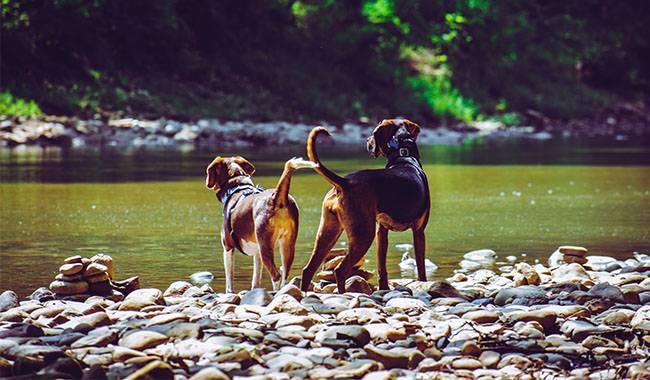
Hiking in the mountains is the perfect opportunity to travel with your four-legged friend. This is the seventh year that Alaskan Sled Dogs have accompanied us on our hiking trips. I want to talk about the different nuances of hiking with dogs, about how to make sure that all participants have fun and have as few problems as possible. At the end, I will write about a separate topic – dog bags, which can carry both their own food and part of their owner’s load. You will learn more about the Benefits of Hiking With a Dog in the LCN Outdoors article.
The Benefits Of Hiking With Your Dog
- you don’t need to find someone to leave your pet with you while you are away.
- After such a busy day, even the most active dog will sleep through the night instead of being mischievous in the apartment.
- fresh air, millions of lovely smells all around, the opportunity to run free without the risk of being hit by a car or eating something harmful – this is canine happiness in its purest form!” .
- Hiking gives you time to spend with your four-legged friend, which isn’t always enough in a busy life. When you go out hiking, you can get closer than ever to him, observe him in his natural habitat, admire his courage in overcoming obstacles, and maybe his intuition will even help you find a trail without getting lost.
- Hiking is a great excuse to temporarily relax the discipline of your home, such as sleeping in the same bed as your beloved dog – or in a tent, for that matter!
- A big dog can help carry some of your load – I’ll cover this in more detail below.
One more point is made by many hikers who take their dogs on hikes. The animals are closer to the natural environment we move from the city to, they don’t need any equipment or training, they don’t need to learn anything – they are in their element here. They feel more at home there, whereas we, with our passion for the beauty of nature, tend to feel more like guests. And dogs become our guides into this natural world, just as we begin to use our senses to feel nature, to see, hear and sense its differences.
Are You And Your Dog Ready To Take A Hike Together?

There are various dog breeds that are designed specifically for mountain hiking. This Alaskan Sled Dog is our companion. They are tireless, agile, hardy companions who handle the cold and heat well and recover very quickly. But they have their drawbacks in travel: they are difficult to train, compared to working dogs, they are very freedom-loving, strong-willed, enjoy interacting with strangers, and will never turn down an opportunity to beg for food in a neighboring camp. They easily consider a five-kilometer radius as their “neighborhood” because they can cover long distances very quickly even on rough terrain.
Other breeds have their own strengths and weaknesses when it comes to hiking. A puppy will struggle through rough terrain, but you can help him get through obstacles. A reliable guard dog won’t run away from you, but it may startle if other hikers approach your campsite. If you’re looking for a dog that will allow you to participate in outdoor activities, try to find out who owns one and ask about any subtle differences that aren’t obvious.
Certain breeds of puppies are heavy and should not be put under too much stress on their growing joints until they are fully grown and mature. This is best checked with your breeder or veterinarian. Huskies have no such limitations – even a three-month-old can walk 10 miles (16 km) in one breath. Of course, you should keep a close eye on him and let him rest.
Puppies are amazingly quick learners! On their second outing, your little one will easily overcome the same obstacles that caused them discouragement last time.
Of course, the dog must be healthy. Even a mature dog that has been vaccinated the day before should be quarantined – no more walks or baths for about 10 days. It is worth postponing the trip until after the heat, as there is no guarantee that you will not encounter other campers with free-running dogs.
It’s best to take your first trip on a familiar trail so you can check out the entire route ahead of time and think about what obstacles there will be and whether your dog will be able to overcome them. Are you physically prepared to carry him or let him down where he can’t go on his own?
One more thing: If you’re taking an inexperienced dog on a multi-day hike, it’s best to plan the route so that the second day of the hike is the easiest. The truth is that when a dog is so engrossed in nature on the first day, he can run so wildly that he can barely move his legs on the second day. After that, he will understand what’s what and will calculate his strength more accurately.
Make sure that no one among the campers is against having a dog in the company so as not to spoil the atmosphere and relationships.
Check-in on short trips to see how well your dog tolerates transportation and if he gets carsick. If traveling by public transportation, how does he feel around strangers, and is the aggressive or stressed?
Most dogs will tolerate travel well if they are used to it from a young age, but there are a few dogs who are uncomfortable no matter what – this happens to humans too. It’s not difficult to recognize when a dog is sick: it drools a lot, swallows and licks its nose repeatedly, hyperventilates, can’t sit still, is depressed, shows signs of extreme agitation, and may vomit. For dogs, just like for people, there are special anti-sickness medications. The most important rule is not to feed your dog before you travel!
One of the most important things is how and what your dog eats at home. If he eats dry food and table food with the same enthusiasm, has no intestinal disorders or allergies and doesn’t need a special diet, then great, no problem when hiking.
Another issue is the dog’s obedience. The more in control he is, the more fun you’ll have with him. But even owners of free-spirited huskies can be surprised on their first outing: in unfamiliar surroundings, he’ll pretend he’s ready to run to the ends of the earth when in reality he’s a bit wary and probably won’t stray too far from you. Courage and experience will grow with exercise after exercise: he will go further and further in his explorations, but he will also get better at knowing when it’s time to come back.
What Do I Need To Prepare Before Hiking?

- Make sure all vaccinations are up to date and bring your veterinarian’s passport and all necessary documents for public transportation. Each type of transportation – trains, coaches, buses, and trains – has its own requirements and special features that you should be familiar with in advance.
- Be prepared that some passengers may have a negative view of dogs, and some of the drivers and controllers may have never even seen a dog on board and may not know what they are allowed to carry and what rules apply to them. Unfortunately, people who travel with dogs, especially large dogs, are often inadvertently seen as troublemakers in our country. Patience, courtesy, persistence, knowing your rights, and a sense of humor will save your nerves! That’s what we do.
- Check and be clear about the rules of the place you are going. In nature reserves and other protected areas, visitors with dogs may not be allowed in at all, or they may be required to keep their pets on a leash.
- Treat your dog for ticks.
- Put a phone tag on the collar – if you don’t already have one – so that if your dog gets lost, you can call and get him back.
- Choose a comfortable, sturdy leash – not a leash. Leather and canvas leashes take a long time to dry out when wet; synthetic leashes are more comfortable. Check the snaps on the leash, or better yet, bring a spare snap.
- Look for a suitable bowl that is lightweight and unbreakable. Plastic food containers are great for bowls for hiking. Folding bowls made of silicone or rubber fabric are also available.
- We are often asked if we need special slippers to protect our paws on sharp rocks. Maybe it’s because he’s been used to it since he was a kid, but our dog has never had this problem.
- If your dog is smooth-coated and may get cold, get him an insulating pad, such as hiking foam.
- Car owners should remember to put trash on the seat because your dog is likely to get very dirty after returning to civilization from its natural environment. A car hammock for your dog is not a bad thing because it allows you to protect the entire back seat. In station wagons and minivans, it’s best to keep your dog in the trunk, but not in a hatchback; in a rear-end collision, the dog could be seriously injured.
Not all dogs can sit quietly in a car. If your dog is restless and prone to wandering around during a journey, it can be dangerous for him and your passengers if he suddenly slows down. In addition, he may distract the driver while driving, which is unacceptable. For this situation, there are special carriers available to secure your pet to the seat belt in the back seat. Never leave your dog in the car with the windows closed. Don’t forget to “rest” during the trip. Have a bowl ready to give your dog water on long trips. Again: no feeding before transport!
Feeding On The Hike
It is best to bring dry food with you. Some hikers who have dogs that eat “natural” foods switch to dry food during the hiking season.
A dog’s appetite may change during the trip – don’t worry, there’s so much new experience that there’s simply no energy left for food! Usually, by the second or third day, even the pickiest of appetites will return to normal.
During the trip, the dog finds everything more casual than at home: people don’t kick him out of the kitchen, but right there, next to him, and literally eat “from the floor” – how can people not beg? The campmates stuff everything into the dog’s mouth: “He looks miserable!”. This can lead firstly to intestinal problems and secondly to a rejection of the daily dry food, which is so uninteresting. If your dog won’t eat his food but he doesn’t panic at home, try mixing up his leftovers after dinner: this will make him more willing to eat and will avoid disobedience.
As you gain experience, you can choose the optimal amount of food for each day; for one dog, the portion of food may be less than what is available at home, and for the other dog, it may be more. For the first time, it is best to eat a little more as usual.
Sleeping While Hiking
It’s easy for dogs to handle this on their own. Some dogs like to sleep in a warm tent, others appreciate the freedom. Some get kicked out of their tents by their owners because they don’t have the patience to open the zipper every time it gets hot and they need to get out. Some learn to open their zippers with their paws, but for some reason, no dog knows how to close them behind them.
Don’t be afraid of dogs getting lost at night: the practice has shown that even the most freedom-loving people will not leave camp at night in unfamiliar places. If the natural water source is far away, don’t forget to prepare a bowl of water for your dog at night!
However, it is recommended to take out food, plates, and garbage bags before morning.
Dog First Aid Kit
Minimum requirements.
- dressings, elastic bandages.
- antiseptic – hydrogen peroxide, chlorhexidine.
- anti-inflammatory and healing ointment for wounds;
- adsorbents – activated carbon, filtrate.
- Vaseline oil. Helps to “slip” foreign bodies that enter the stomach or intestines. It has the advantage that it is not absorbed, but is completely excreted through the rectum.
- Tweezers for the extraction of ticks.
In addition, pet stores sell special slippers to protect injured paws, and it is best to carry at least one with you in case of an emergency. Sled dog slippers used in races are a different type of shoe!
When helping a dog whose health is seriously threatened, remember that your goal is to get to a veterinary clinic as soon as possible and that self-treatment can be harmful.
A Few Dogs On A Hike
Hiking with several dogs is, first of all, fun and, secondly, inevitable if you are looking for companionship among like-minded dog lovers. The problem with multiple dogs in the same company can be obvious: figuring out their hierarchy in this newly formed “pack” where they can fight. Men, especially young men, are best introduced in advance. Maybe they’ll figure out which one of them is cooler before they travel, and the trip will be less of a hassle.
The only dog in the family usually doesn’t socialize ideally among the other dogs, just as the owner of one animal doesn’t always know the nuances of a pack’s behavior. You need to take care of yourself so that you don’t create situations that could lead to arguments. You shouldn’t change the state of the dogs: don’t forget to feed the big dogs first, then the little ones. Do not let one of the dogs guard the strategic entrance to the food storage tent.
Remember that a human meal can be a very stressful event for a dog waiting for dinner, during which someone may feel that someone is allowed too close to the table and needs to take urgent action …… In general, being alert at all times requires you! For any aggression, especially fighting, all participants should be scolded and punished. The person who started it first is certainly more to blame, but the victim may have provoked him in a way that people don’t see. The ability to get out of a conflict is very important for companion dogs.
It is best to discuss these points in advance of the trip to avoid arguments and insults between participants. If you already know from experience that someone’s dog is combative and his owner encourages or ignores these tendencies, it is best to refuse to travel together.
Hazards And Precautions – Benefits of Hiking With a Dog

Dogs adapt to natural conditions faster than we do. A more or less experienced dog will choose a safe path and won’t climb where it can’t go. But we choose the route for ourselves, not for them, so we need to keep the following dangerous situations in mind
Shoals on mountain rivers. Here you need to control the dog and secure it with a leash or rope in case of strong currents. Ideally, this is done like this: a leash is tied to the dog’s collar, one person stays on the bank with the dog, and another person crosses the river with the leash in his hand and then lets the dog follow him.
Along the way, the river was swift and the rope bridge was not suitable for the dog at all. I had to unload my stuff from my pack, put Dog in it, and put it on my back.
Rocks. Dogs usually climb well and can surprise with their agility, but it’s scarier and more difficult for them to descend. It may take your involvement to help them get off. A dog, seeing people descending from a place it is afraid of, often panics, whines or howls: it is afraid you will leave it. The dog may behave unexpectedly – jumping off or starting to find other ways, or worse. Therefore, there is no need to leave the dog last. Let one person stay with her to guide her while the other receives her below.
Stone slides are dangerous for both the dog and the owner because from above the dog can lower the stone on the person. In such a place, everyone should go together. If the dog does not listen to the “close” command, you need to use the leash to tie it. But in the midst of a large block of motionless rocks, it is better to let her go, so that she can choose the best path for herself, more convenient for her, rather than for a person, you and she do not interfere with each other.
The ability to be able to tug with a leash nearby without pulling it is very important in difficult areas and can even save your life. Since hands should be free, it is best to attach the leash to your backpack and adjust its length so that it does not drag on the ground and the dog does not step on it. Teaching a dog to walk comfortably on a leash instead of in a hurry is easy: you need to walk a few kilometers along the trail using hiking sticks. A flashing stick in front of the dog’s nose will soon stop the forward poke.
In general, in difficult places, if you see that the dog will cope on his own and that he is panicking, you do not need to rush him, comfort, pity, or scold him. Calmly encourage the animal and give him time to adjust to the situation. After passing through the dangerous place, hold the dog so that he does not crawl back and does not disturb the other participants.
The dog will quickly gain experience and will have an easier and more fearless time in a new battle through the same obstacles that caused the last desperate wail.
Dehydration. A dog will find a source of water that a person will not drink from – such as a puddle, but again, you need to take care of the water supply, not only for yourself but for her as well. Dry food can lead to an increased need for water, so if you know there will be no water on certain sections of the route, it’s best not to feed your dog until the transition.
Ticks are carriers of canine pear disease, a dangerous disease that is sometimes fatal and always debilitating to a dog’s health. Treatment should be started as soon as possible. The incubation period for pyriasis varies from 2-4 days to 3 weeks. The most common symptoms are generalized weakness, refusal to eat, high fever, and dark urine. The diagnosis is made through blood tests. Taking a tick to analyze is meaningless: it does not determine if it is a carrier of the disease.
Therefore, when a dog has a biting tick, it is necessary to observe its behavior and health more closely. It is easiest to pull out the tick with tweezers – do not forget to hike. Afterward, it is necessary to disinfect the bite site.
In the South, dogs must be treated for ticks all year round, because even in the winter there is very warm weather and pear-shaped worm disease is not uncommon. We must remember that no remedy for ticks is 100% effective. During the period when ticks are most active – April and May – it is best to combine different methods, such as drops plus spray or drops plus a collar, before going to the forest. During this spring period, it is best to stop and check your dog every time: the sooner you find a tick, the easier it will be to pull it out.
Snake bites. Snake bites are most dangerous for puppies, older or frail dogs. Among the venomous snakes in the West Grand Canyon area, we have a Grand Canyon Viper. For a healthy dog, a venomous snake bite is not fatal, but it does little good. The most dangerous bites occur on the neck and tongue because they can cause suffocation.
In most cases, a curious dog will be bitten on the nose or paw. The bite site is swollen and covered with a wound caused by two snake teeth. The dog loses activity, loses its appetite, and whines from the severe pain. The first thing to do is to keep the dog calm while slowing the spread of the poison. Camping plans must be reviewed and kept for at least 12 hours. The bite site can be disinfected with hydrogen peroxide, but never with alcohol, which promotes the absorption of the poison. To remove the toxin, the dog needs to be given plenty of fluids. An allergic reaction to the snake bite can be relieved by taking 1-2 tablets of an antihistamine, Benadryl. In addition, you can use decongestants, nonsteroidal anti-inflammatory drugs, and vasoprotective agents that reduce vascular permeability.
The special anti-snake serum is effective, but only if entered immediately after the bite, i.e., carried with you. By the time you get home, its use is no longer useful.
What not to do when bitten by a venomous snake:
- Apply a tourniquet. Tourniquets are used for cobra bites, which work differently, and for venomous snake bites, pulling a tourniquet can lead to gangrene.
- Burn the poison. This is pointless because the venomous snake injects the venom deep enough, 0.4-0.6 inches (1-1.5 cm). The crust that forms after cauterization will prevent healing.
- Cut the bite. This will not help, but it will hurt: you may get an infection.
- Give your dog alcohol or use it to treat the wound. Alcohol promotes the absorption of poisons.
Wild animals are usually dangerous because the hunting instinct can make a dog forget everything in the world and enthusiastically start chasing. In this case, there is nothing we can do but wait patiently until the dog is exhausted and returns. In our Grand Canyon Mountains, Dog encountered bison, antelope, and deer, but, of course, he didn’t have half a chance to catch up with any of them. On a personal note, the encounter with the bear made me nervous as he tried to chase them as well. Fortunately, our Grand Canyon bears are afraid of a man, and when they encounter him, they duck and cover at lightning speed.